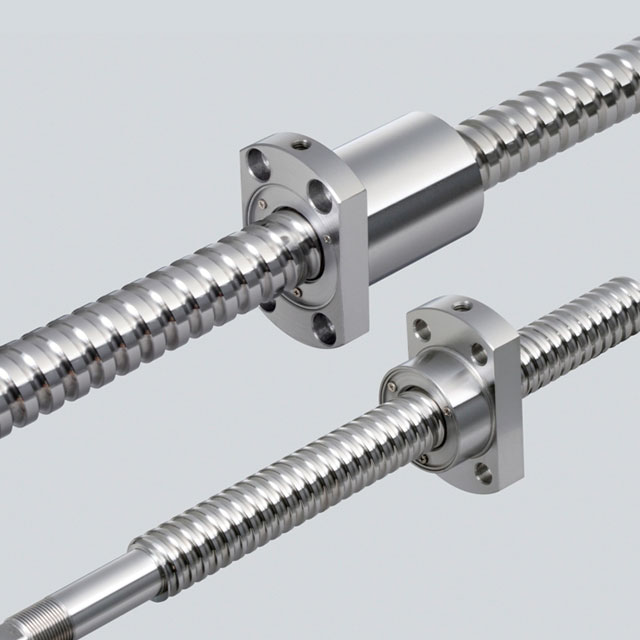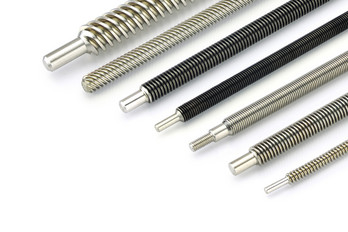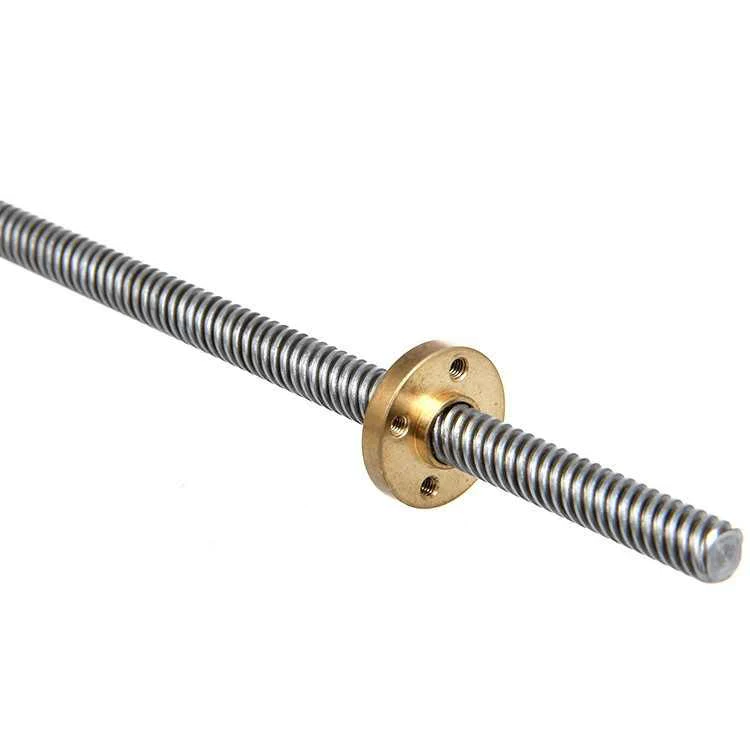Product Description
Product Description
Bearing No. 7657130-TVP-Thrust Angular contact ball bearing
·Dimensions: 30x62x16mm
·Rubber seal on both sides
·1-TVP-2RS(FAG), BSA206C(SKF), 765716TN-2RZ
Clearance: C0
Vibration: ZV2,ZV3
Precision Class: P5,P4, ABEC-5, ABEC-7
Arrangement: DB/DT/DF/SU/TFT/TBT/QBC/QBT
Application: screw support
| Bearing Number | Boundary dimensions(mm) | Load Rating(KN) | Limiting Speed(rpm) | Friction Torque | Weight(kg) | ||||
| d | D | B | rmin | Cr | Cor | Grease | N.mm | ||
| 7657112-TVP | 12 | 32 | 10 | 0.6 | 12200 | 20700 | 8000 | 15 | 0.042 |
| 7657115-TVP | 15 | 35 | 11 | 0.6 | 13100 | 24700 | 6700 | 20 | 0.052 |
| 7657117-TVP | 17 | 40 | 12 | 0.6 | 17200 | 32500 | 6000 | 30 | 0.074 |
| 7657120-TVP | 20 | 47 | 14 | 1.0 | 19100 | 38000 | 5000 | 50 | 0.139 |
| BSB571047-T | 47 | 15 | 1.0 | 20800 | 43000 | 5600 | 50 | 0.130 | |
| 765711-TVP | 52 | 15 | 1.1 | 25500 | 53000 | 4500 | 60 | 0.170 | |
| 7657125-TVP | 25 | 52 | 15 | 1.0 | 23200 | 50000 | 4500 | 65 | 0.147 |
| BSB571062-T | 62 | 15 | 1.0 | 29500 | 68000 | 4300 | 85 | 0.240 | |
| 76 0571 1-TVP | 62 | 17 | 1.1 | 29500 | 68000 | 3800 | 85 | 0.275 | |
| BSB030062-T | 30 | 62 | 15 | 1.0 | 27500 | 66000 | 4200 | 85 | 0.220 |
| 7657130-TVP | 62 | 16 | 1.0 | 27500 | 66000 | 3800 | 85 | 0.232 | |
| 7603030-TVP | 72 | 19 | 1.1 | 36500 | 89000 | 3200 | 130 | 0.409 | |
| BSB 0571 72-T | 35 | 72 | 15 | 1.0 | 31500 | 81000 | 3700 | 115 | 0.300 |
| 7657135-TVP | 72 | 17 | 1.1 | 31500 | 81000 | 3200 | 115 | 0.339 | |
| 7603035-TVP | 80 | 21 | 1.5 | 38000 | 100000 | 3000 | 170 | 0.546 | |
| BSB040072-T | 40 | 72 | 15 | 1.0 | 29500 | 82000 | 3500 | 115 | 0.260 |
| 7657140-TVP | 80 | 18 | 1.1 | 39000 | 106000 | 2800 | 170 | 0.418 | |
| BSB040090-T | 90 | 20 | 1.5 | 52000 | 138000 | 3100 | 225 | 0.650 | |
| 7603040-TVP | 90 | 23 | 1.5 | 52000 | 138000 | 2600 | 225 | 0.751 | |
| BSB045075-T | 45 | 75 | 15 | 1.0 | 30000 | 85000 | 3300 | 130 | 0.260 |
| 7657145-TVP | 85 | 19 | 1.1 | 39500 | 111000 | 2600 | 190 | 0.488 | |
| BSB57100-T | 100 | 20 | 1.5 | 62000 | 172000 | 2700 | 300 | 0.810 | |
| 7603045-TVP | 100 | 25 | 1.5 | 62000 | 172000 | 2200 | 300 | 0.992 | |
| 7657150-TVP | 50 | 90 | 20 | 1.1 | 41000 | 122000 | 2400 | 230 | 0.557 |
| BSB 0571 10-T | 100 | 20 | 1.5 | 62000 | 172000 | 2700 | 330 | 0.750 | |
| 7603050-TVP | 110 | 27 | 2.0 | 72000 | 203000 | 2000 | 360 | 1.290 | |
| HXB Bearing No. | FAG | NSK | SKF | NTN |
| 765711TN | 7657112TVP | BSA201C | ||
| 765711TN-2RZ | ||||
| 765712TN | 7657115TVP | BSA202C | ||
| 765712TN-2RZ | ||||
| 765713TN | 7657117TVP | BSA203C | ||
| 765713TN-2RZ | ||||
| 765714TN | 7657120TVP | BSA204C | ||
| 765714TN-2RZ | ||||
| 765715TN | 7657125TVP | BS205C | ||
| 765715TN-2RZ | ||||
| 765716TN | 7657130TVP | BSA206C | ||
| 765716TN-2RZ | ||||
| 765717TN | 7657135TVP | BSA207C | ||
| 765718TN | 7657140TVP | BSA208C | ||
| 765719TN | 7657145TVP | BSA209C | ||
| 765710TN | 7657150TVP | BSA210C | ||
| 765711TN | 7657155TVP | BSA211C | ||
| 765712TN | 7657160TVP | BSA212C |
Application
Company Profile
Established in 1995, as a leading ball bearing manufacturer in China, CHINAMFG offers more than 1,000 kinds of ball bearing to fulfill our customers’ needs. With excellent production team and technical team, we can supply high quality products consistently.
After more than 20 years of development, HXB’s main products involves deep groove ball bearings, angular contact ball bearings, high precision spindle bearings, etc. Our bearings are wildly used in electric motors, machinery tool spindle, CNC, NEVs and other fields.
Our production capacity:
deep groove ball bearings: 34 production lines, 30,000,000pcs per year
Angular contact ball bearings: 14 production lines 3,000,000pcs per year
Application fields: electric motors, pumps, textile machine, household appliance,machine tool spindle, CNC machine, healthcare industry, intelligence manufacturing etc.
Certificate: ISO16949:2016, ISO9001:2015
/* January 22, 2571 19:08:37 */!function(){function s(e,r){var a,o={};try{e&&e.split(“,”).forEach(function(e,t){e&&(a=e.match(/(.*?):(.*)$/))&&1
| Contact Angle: | 60° |
|---|---|
| Aligning: | Non-Aligning Bearing |
| Separated: | Unseparated |
| Rows Number: | Single |
| Load Direction: | Radial Bearing |
| Material: | Bearing Steel |
| Samples: |
US$ 21/Piece
1 Piece(Min.Order) | |
|---|
| Customization: |
Available
|
|
|---|

Can lead screws be customized for specific industries or machinery configurations?
Yes, lead screws can be customized to meet the specific requirements of different industries or machinery configurations. Customization allows for the adaptation of lead screws to unique applications, ensuring optimal performance and compatibility. Here’s how lead screws can be customized:
Thread Design:
The thread design of lead screws can be customized to suit specific applications. The thread profile, such as Acme, square, or buttress, can be selected based on factors such as load capacity, efficiency, backlash, and self-locking characteristics. The thread pitch can be adjusted to achieve the desired linear travel per revolution, allowing for different positioning resolutions. Custom thread designs can also be implemented to address specific requirements or constraints of the machinery configuration.
Materials and Coatings:
The choice of materials for lead screws can be customized based on the application’s environmental conditions and performance requirements. Different materials, such as stainless steel, carbon steel, or alloys, can be selected for their mechanical properties, corrosion resistance, or temperature resistance. Additionally, lead screws can be coated or treated with specialized coatings, such as Teflon or ceramic coatings, to reduce friction, improve wear resistance, or enhance lubrication properties.
Size and Dimensions:
The size and dimensions of lead screws can be customized to fit specific machinery configurations or space constraints. This includes variations in length, diameter, and thread length to ensure proper fit and integration within the machinery or system. Customization of lead screw dimensions allows for efficient utilization of available space and compatibility with existing components or mounting mechanisms.
End Machining:
Lead screws can be customized with different types of end machining to facilitate their connection to other components or power sources. This may involve the addition of keyways, flats, or other features to enable coupling with drive mechanisms, such as motors or handwheels. Customized end machining ensures proper alignment, torque transmission, and ease of installation within the specific machinery configuration.
Accessories and Attachments:
Customization of lead screws can also involve the addition of accessories or attachments to enhance their functionality or compatibility with specific industries or machinery configurations. This may include the inclusion of anti-backlash nuts, thrust bearings, lubrication systems, or wipers. These accessories and attachments can improve precision, reduce wear, increase load capacity, or address specific application requirements.
By offering customization options, lead screw manufacturers can cater to the diverse needs of different industries and machinery configurations. Customized lead screws ensure that the linear motion system is optimized for performance, efficiency, and compatibility, resulting in improved overall functionality and reliability.

How do electronic or computer-controlled components integrate with lead screws in modern applications?
In modern applications, electronic or computer-controlled components play a crucial role in integrating with lead screws to enhance functionality, precision, and automation. These components enable advanced control, monitoring, and feedback capabilities, allowing for more efficient and accurate operation of systems incorporating lead screws. Here are some ways electronic or computer-controlled components integrate with lead screws in modern applications:
- Position Control: Electronic control systems can precisely control the position of the lead screw by monitoring and adjusting the rotational movement of the motor driving the screw. Position feedback sensors, such as encoders or linear scales, provide real-time information about the screw’s position, allowing the control system to accurately position the load. This integration enables precise positioning and highly repeatable motion control in applications such as CNC machinery, 3D printers, or robotic systems.
- Speed and Velocity Control: Electronic control systems can regulate the speed and velocity of the lead screw by controlling the motor’s rotational speed. By adjusting the motor speed, the control system can achieve specific linear speeds or velocity profiles along the length of the lead screw. This integration is particularly useful in applications where controlled acceleration, deceleration, or dynamic speed changes are required, such as automated manufacturing processes or motion control systems.
- Force and Torque Control: In some applications, it is necessary to control the force or torque applied by the lead screw. Electronic control systems can monitor and adjust the motor’s current or voltage to regulate the applied force or torque. This integration allows for precise force control, load balancing, or torque limiting in applications such as material testing machines, automated assembly systems, or lifting mechanisms.
- Automation and Synchronization: Electronic or computer-controlled components facilitate the automation and synchronization of multiple lead screws or other mechanical components. Through centralized control, these components can coordinate the movements of multiple lead screws, ensuring precise and synchronized motion. This integration is commonly used in complex systems with multiple axes of motion, such as multi-axis CNC machines or robotic systems.
- Monitoring and Diagnostics: Electronic control systems can monitor the operating parameters of lead screws, such as temperature, vibration, or load conditions. By integrating sensors and monitoring algorithms, the control system can detect abnormal conditions, provide real-time feedback, and trigger appropriate actions, such as alerting maintenance personnel or implementing protective measures. This integration enhances system reliability, prevents failures, and enables predictive maintenance in applications where lead screw performance is critical.
- Human-Machine Interface (HMI): Electronic or computer-controlled components often provide a user interface through which operators can interact with the lead screw system. HMIs allow operators to input commands, monitor system status, and receive feedback. This integration simplifies system operation, enables parameter adjustments, and facilitates troubleshooting or diagnostics.
In summary, electronic or computer-controlled components play a vital role in integrating with lead screws in modern applications. Position control, speed and velocity control, force and torque control, automation and synchronization, monitoring and diagnostics, and human-machine interface capabilities enhance the functionality, precision, and automation of systems incorporating lead screws. This integration enables advanced control, improved performance, and enhanced operational capabilities in various industries and applications.

Are there specific advantages to using lead screws over other linear motion systems?
Yes, there are specific advantages to using lead screws over other linear motion systems. Here are some of the advantages associated with lead screws:
- Precision and Accuracy: Lead screws offer precise and accurate linear motion control. The thread design and pitch allow for precise positioning and movement of components, making them suitable for applications that require high levels of accuracy and repeatability.
- Cost-Effectiveness: Lead screws are often more cost-effective compared to other linear motion systems, such as ball screws or linear actuators. They provide a reliable and efficient solution for converting rotary motion into linear motion at a relatively lower cost, making them a popular choice for many applications.
- High Load Capacity: Lead screws are capable of handling significant axial loads and torque. The thread engagement between the screw and nut distributes the load over a larger surface area, allowing lead screws to support and transfer substantial loads. This makes them suitable for applications that require heavy-duty performance and load-carrying capabilities.
- Self-Locking: Lead screws have a self-locking characteristic, which means they can hold their position without the need for additional locking mechanisms. The friction between the mating threads helps prevent back-driving and maintains the position of the load, providing stability and safety in applications where holding the position is critical.
- Simple Design and Installation: Lead screws have a relatively simple design, consisting of a screw and a nut. This simplicity makes them easier to install and maintain compared to more complex linear motion systems. Additionally, the straightforward design allows for customization and modification to meet specific application requirements.
- Efficiency: Lead screws can achieve high mechanical efficiency in converting rotary motion to linear motion. The efficiency depends on factors such as the thread design, lubrication, and preload. With proper design and lubrication, lead screws can operate with minimal friction and energy loss, ensuring efficient power transmission.
- Versatility: Lead screws can be used in a wide range of applications across various industries. They are suitable for applications that require linear motion, precise positioning, or adjustment of components. Lead screws find applications in industries such as manufacturing, automation, robotics, aerospace, medical, and more.
These advantages make lead screws a popular choice in many applications where precise linear motion control, cost-effectiveness, high load capacity, and simplicity are essential. However, it’s important to consider specific application requirements and factors such as speed, accuracy, duty cycle, and environmental conditions when selecting the appropriate linear motion system.


editor by CX 2024-03-01